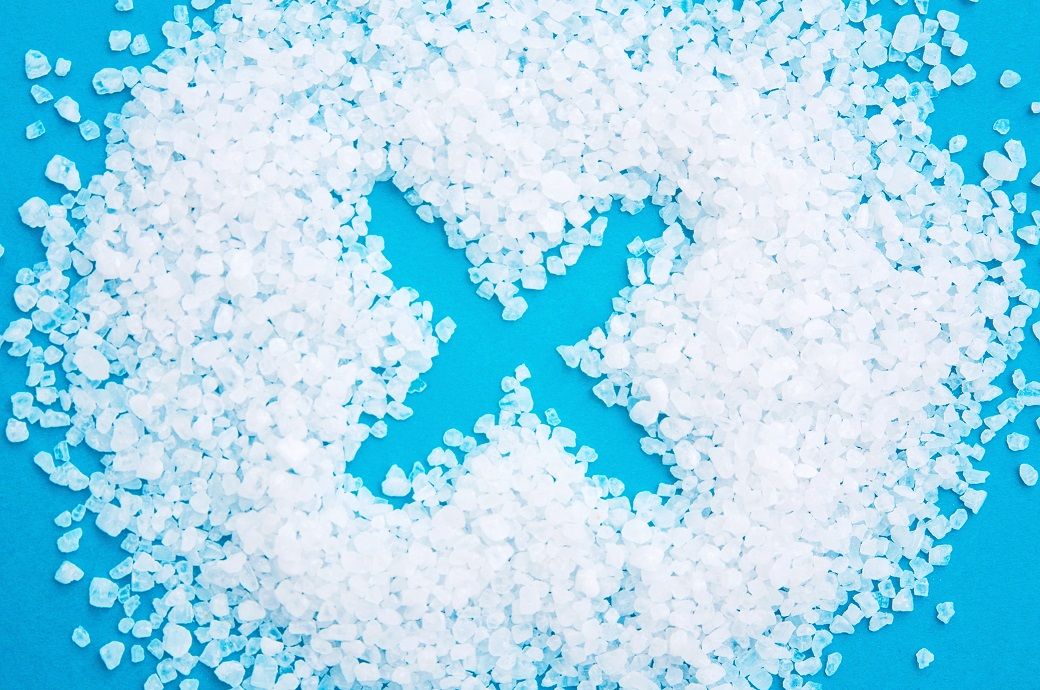:max_bytes(150000):strip_icc():format(jpeg)/Health-GettyImages-2151995461-757e0665763241d480e37f92cd7f3911.jpg)
Atopic dermatitis is a chronic (long-lasting) skin condition that causes dry, itchy patches of skin that may crack or ooze. It is the most common form of eczema.
Itchiness occurs when an overactive immune response causes inflammation and irritation in your skin. Scratching an itch can cause sores, bleeding, infection, and increased itch.
The urge to scratch can also interfere with your sleep, social life, ability to concentrate, and overall quality of life. To help stop scratching with atopic dermatitis, give these strategies a try:
Dry skin can make you feel itchy. With atopic dermatitis, dryness occurs because of problems with the skin barrier, the outer layer that retains moisture. Moisturizers can help preserve this barrier.
It’s a good idea to apply moisturizer at least twice daily, especially after bathing or washing. Choose oil-rich eczema creams or ointments, which are thicker than lotions. Go for fragrance-free, unscented options.
Research suggests that daily moisturizing can help reduce the number of eczema flares and increase the time between them.
Applying a cold compress to your affected skin may help relieve atopic dermatitis itch and burn, helping you scratch less. To make a cold compress, soak a towel or washcloth in cold water, wring it out, and apply it to itchy areas. Afterward, apply a layer of moisturizer.
Daily use of topical (applied to the skin) creams or gels that have an anesthetic (numbing) effect may help. Numbing creams are available over the counter or with a prescription. Examples include Lidoderm (lidocaine) or Lipoderm (a combination of ketamine, amitriptyline, and lidocaine).
Studies have found that these medications can help manage itch and other symptoms of atopic dermatitis. In one study, the topical anesthetic combination of hydrocortisone and pramoxine (found in some over-the-counter eczema lotions) was effective for short- and long-term itch relief.
Habit reversal techniques involve changing your behavior and relationship to your eczema itch.
Habit reversal is a type of cognitive behavioral therapy that you can do with a therapist or counselor. Sessions focus on disrupting the “itch-scratch” cycle. You learn techniques to distract from the itch and promote mindfulness.
Research suggests that habit reversal techniques—used as part of a broader treatment plan—may improve scratching.
Stress can make eczema symptoms worse. Chronic stress caused by factors like financial pressure or major life changes can be especially impactful. It’s important to manage your stress with methods such as:
- Sleep: You may need about seven hours of sleep every night. Be consistent with your bedtime, and make sure your bed and bedroom are comfortable and quiet.
- Meditation: Different types of meditation can help clear your mind and reduce your overall stress levels. Try yoga, mindfulness, or breathing exercises.
- Relaxing activities: Doing light exercise or activities you enjoy can help manage stress.
- Limited social media and news: Consuming too much news or social media can be a source of stress. It may help to limit your use.
Phototherapy is also known as light therapy.
Phototherapy for atopic dermatitis involves using ultraviolet B (UVB) rays, which researchers believe act on nerve endings that make you feel itchy. In one study, 93% of people using UVB for eczema reported relief after several weeks of treatment.
Changing the products you use to do your laundry may help ease the itch. It’s important to use products designed for sensitive skin and to avoid scented fabric softeners or dryer sheets. Certain fragrances or ingredients in many laundry products can trigger eczema flares.
It may also help to remove tags (which can irritate your skin) from your clothes and to wash new clothes before wearing them.
Eye movement desensitization and reprocessing (EMDR) therapy is a psychological therapy designed to treat conditions such as post-traumatic stress disorder (PTSD). Some research suggests EMDR may also help with atopic dermatitis itch, reducing daytime scratching, increasing self-control, and improving quality of life.
In EMDR sessions, you visualize the discomfort and itch while a therapist stimulates your eyes to move or exposes one or both ears to certain sounds. This therapy helps you adapt to the discomfort.
When applied to the skin, oatmeal can help relieve the itch caused by atopic dermatitis. It can also help clear away dead skin, reduce dryness, and support the skin’s protective barrier.
Oatmeal is a common ingredient in moisturizers. You can also add 1 cup of colloidal oatmeal to a lukewarm bath or make a paste to apply directly to your skin.
You can try adding mild bleach to your bath to relieve eczema symptoms. To make a bleach bath, add anywhere from a quarter to a half cup of 5-6% bleach to a tub full of warm water. You can soak for 10 minutes and take 2-3 diluted bleach baths per week.
Some research suggests that symptoms may decrease by an average of 22% among people with moderate to severe eczema. About 10% of people may see improvements of over 50%.
People with atopic dermatitis may also be allergic to dust mites and pet dander. Exposure to these allergens can worsen eczema symptoms. Allergen immunotherapy is a type of medical treatment that involves injecting small amounts of an allergen to help decrease reactions.
Researchers are unclear about how well allergen immunotherapy works. If you’d like to consider immunotherapy, talk to your healthcare provider.
Prescription medications can play a role in managing more severe atopic dermatitis. Healthcare providers may prescribe the following:
- Topical corticosteroids: Medicated creams or gels like Ala-Cort (hydrocortisone) or Diproline (betamethasone) may help reduce inflammation to manage eczema symptoms like itch.
- Topical calcineurin inhibitors: Topical calcineurin inhibitors like Protopic (tacrolimus) are an alternative to corticosteroids. They’re often prescribed for more sensitive areas, such as the face.
- Topical PDE4 inhibitors: Eucrisa (crisaborole) cream is a phosphodiesterase-4 (PDE4) inhibitor. It reduces inflammation, which can help soothe itching.
- Dupixent (dupilumab): Injections of this biologic medication act on the immune system to reduce itch and other symptoms of atopic dermatitis.
- JAK inhibitors: These medications work on inflammatory chemicals in your body to help decrease itching. An example for atopic dermatitis is Opzelura (ruxolitinib).
Scratching your skin too much can lead to cuts, lesions, and scabs. If untreated, these wounds can become infected, and some skin infections can become serious.
It’s important to care for scratched skin. To help avoid infection:
- Regularly wash your hands, especially before touching or scratching your skin
- Keep your skin clean and moisturized, limiting your bathing to 5-10 minutes to avoid aggravating the itch
- Avoid potential skin irritants by wearing gloves when washing dishes or using cleaning products
- Avoid sharing towels, washcloths, razors, or other hygiene products
Consider a call to your healthcare provider if:
- Home remedies and an eczema-friendly skincare routine aren’t helping the itch or other symptoms
- Your itching comes back or gets worse despite your current treatments
- You have any signs of an infection, including blistering, pain, redness, increased itch, pus (leaking yellow or clear fluid), swelling, swollen glands, and fever
Itchy patches of skin are the main sign of atopic dermatitis. To avoid scratching, moisturizers, topical medications, and stress management techniques may help.
If home remedies don’t work, you can talk to your healthcare provider about medical approaches that may help.


:max_bytes(150000):strip_icc()/Health-milk-recall-462d75ddea10415986c38d8da42d5f09.png)

:max_bytes(150000):strip_icc()/Health-GettyImages-2151995461-757e0665763241d480e37f92cd7f3911.jpg)
